
bio topic 5 ch7 : notes
DNA STRUCTURE AND FUNCTION
clones: Genetically identical copy of an organism.
DNA had to be the transforming principle.
DNA was widely assumed to be too simple to encode genetic information, because it has only four nucleotide components
The team were also careful to point out that they had not proven DNA was the only hereditary material.
DNA has to have the following four properties in order to function as the sole hereditary:
Complete genetic information must be transmitted along with the molecule from one generation to the next.
Body cells of any individual of a species should contain the same amount of it.
It must be exempt from major metabolic change—the quantity of the material should not fluctuate over time in cells of a given type.
It must be capable of storing the huge amount of information that would be required to build a new individual.
Identical Twins Have Identical DNA
somatic cell nuclear transfer (SCNT): Reproductive cloning method in which the nucleus of an unfertilized egg is replaced with the DNA of a donor’s body cell.
Few SCNT-generated embryos survive implantation in surrogates.
BUILDING BLOCKS OF DNA
Each nucleotide has three components:
a nitrogen-containing base (nucleotides A,G,T,C
a five-carbon sugar
phosphate groups
The four types of nucleotides differ in their component base:
adenine (A),
guanine (G),
thymine (T),
cytosine (C).
DNA sequence: Order of nucleotides bases in a strand of DNA.
sequences that differ are the basis of traits that distinguish individuals and define species
The DNA molecules in a human cell collectively have about 6 billion base pairs, and would be about 6.5 feet (2 meters) long if stretched out
Proteins associate with DNA molecules to form structures called chromosomes. These proteins pack the DNA very tightly by organizing it into a series of coiled fibers
chromosomes: Structure that consists of DNA together with associated proteins; carries part or all of a cell’s genetic information.
in each eukaryotic chromosome, the DNA molecule’s double helix wraps at regular intervals around proteins called histones, forming spool-like structures that look like beads on a string
histones: Type of protein that associates with the DNA double helix; one of many proteins that structurally organize eukaryotic chromosomes.
A cell preparing to divide will duplicate its DNA.
After duplication, a eukaryotic chromosome consists of two identical DNA molecules attached to one another at a region called the centromere.
centromere: Of a duplicated eukaryotic chromosome, constricted region where sister chromatids attach to each other.
The two identical halves of a duplicated eukaryotic chromosome are called sister chromatids:
sister chromatids: Of a duplicated eukaryotic chromosome, the two identical DNA molecules attached to one another at the centromere.
Just before the cell divides, its DNA packs into an even more highly condensed form that is less likely to become damaged during the division process.
This fiber packs into the chromosome’s most condensed form, which looks like an “X” under a microscope.
chromosome number: The total number of chromosomes in a cell of a given species.
For example, the chromosome number of humans is 46, so our body cells have 46 chromosomes.
Actually, human body cells have two sets of 23 chromosomes: two of each type. Cells with two sets of chromosomes are diploid,
diploid: Having two of each type of chromosome characteristic of the species (2n).
karyotype: Image of an individual’s complement of chromosomes arranged by size, length, shape, and centromere location.
In a human body cell, 22 of the 23 pairs of chromosomes are autosomes.
autosomes: A chromosome of a pair that is the same in males and females; a chromosome that is not a sex chromosome.
sex chromosomes: Chromosome involved in determining anatomical sex; member of a pair of chromosomes that differs between males and females.
The sex chromosomes of humans are called X and Y
typical human female have two X chromosomes (XX)
typical human male have one X and one Y chromosome (XY)
When any cell reproduces, it divides.
Both descendant cells must inherit a complete copy of the parent cell’s genetic information, or they will not be like the parent cell
Each molecule of DNA is copied in its entirety, and two molecules of DNA that are identical to the parent molecule are produced. (DNA replication)
As replication begins, enzymes pry apart the two DNA strands: One untwists the double helix, and another breaks the hydrogen bonds that hold the strands together
DNA polymerase: Enzyme that carries out DNA synthesis during DNA replication; uses a DNA template to assemble a complementary strand of DNA.
As the DNA strands separate, their internally positioned bases become exposed, and another enzyme starts making primers.
primer: Short, single strand of DNA or RNA that serves as an attachment point for DNA polymerase.
Gene expression : the process by which the information encoded in a gene is used to direct the assembly of a protein molecule.
DNA Strands Separate
Primers Hybridize
DNA Polymerase Assembles Nucleotides
Two DNA Molecules Are Produced
mutation: Permanent change in the DNA sequence of a chromosome. See base-pair substitution, deletion, insertion.
Mutations that alter DNA’s instructions may have harmful or lethal outcomes
ex> cancer
Mutations can be introduced into DNA in several ways.
Some are the outcome of errors during DNA replication, but most are a consequence of DNA damage (breaks in the sugar–phosphate backbone) or alterations in the structure of nucleotide bases.
Mutations occur when the cell’s repair mechanisms fail to fix the damage.
Sometimes, a newly replicated DNA strand is not exactly complementary to its parent strand.
A nucleotide may get deleted during DNA replication, for example, or an extra one inserted.
Occasionally, the wrong nucleotide is added.
Most polymerases can proofread their work, reversing the synthesis reaction to remove an error, then resuming synthesis in the forward direction.
Errors missed during this proofreading process can be corrected later, because bases that are not properly paired distort the double helix.
The nonparental (new) strand is cut, and the section containing the mismatch is removed.
A DNA polymerase then uses the parental strand as a template to replace the missing nucleotides,
DNA ligase seals any gaps in the new strand.
Sometimes, proofreading and mismatch repair fail to correct an error.
The error cannot be detected after a second round of DNA replication, because both strands will then base-pair properly
When the cell divides, its descendants will inherit the error as a mutation.

Dimers cause mutations because polymerases tend to copy kinked DNA incorrectly.
Dimers can also block the progress of a polymerase, so DNA replication stalls or collapses.
This outcome often causes the chromosome to break up.
Usually, chromosomal breaks cause cell death, but cells that do survive often have mutations at the sites of breakage.
It requires the use of a sister chromatid (or another chromosome) as a template for DNA synthesis.
Skin Cancer
For every second a skin cell spends in the sun, 50 to 100 dimers form in its DNA.
This is why exposing unprotected skin to sunlight or other sources of UV light can cause skin cancer.
DNA sequences are often written as single sequences in the 5' to 3' direction. This does not mean that the molecule is not double-stranded, but rather the second strand is assumed. For instance, if you see a DNA sequence listed as: ATGGGGCCG, without other information provided, assume that the sequence is written from 5' to 3', left to right. Also assume that the complementary sequence from 3' to 5' exists, hydrogen bonded to the initial sequence.
Many mutations are caused by chemicals that bind to nucleotide bases
DNA polymerases tend to skip bases that have been altered in this way, or copy them incorrectly during replication.
An altered base may also cause chromosome breakage by blocking DNA replication.
Tobacco smoke in particular contains thousands of chemicals, at least 70 of which have been proven to cause mutations that can lead to cancer.
Smoking causes about 30 percent of all cancer deaths in the United States,
using other tobacco products such as smokeless tobacco, snuff, and chewing tobacco is also dangerous.
These products contain the same mutation-causing chemicals as tobacco smoke.
Simply painting some of these chemicals on the skin of animals causes tumors to form.
Some foods contain mutation-causing chemicals.
Nitrites, for example, are added to cured foods such as sausages and bacon, and they form when meat is smoked or cooked at high temperature.
Acetaldehyde (the chemical that is produced by the body during alcohol consumption) has several mutation-causing effects:
It binds to bases directly, cross-links the two strands, and causes covalent bonds to form between nucleotide bases and other organic molecules in the cell.
each human child is born with an average of 64 new mutations.
It is important to remember that not all mutations are dangerous—some are even beneficial.
Summary
Section 7.1
The now-common practice of making clones (exact genetic copies) of adult animals works because the DNA in each body cell contains instructions for building the organism.
Section 7.2
Identifying deoxyribonucleic acid (DNA) as the hereditary material of life took decades of research involving many scientists. Experiments with bacteria were key to the discovery.
Somatic cell nuclear transfer (SCNT) and other types of reproductive cloning technologies can produce genetically identical individuals (clones) from a body cell of an adult animal.
Cells in multicelled bodies differ because they use different subsets of their DNA. Differentiation is the process by which cells become specialized during embryonic development.
Section 7.3
A nucleotide has three components: a five-carbon sugar, a nitrogen-containing base, and phosphate groups. Bonds between the sugar of one nucleotide and a phosphate group of the next form the sugar–phosphate backbone of nucleic acid chains (strands). DNA strands are assembled from four types of nucleotides. Each has a deoxyribose sugar, a chain of three phosphate groups, and one of four bases: adenine (A), guanine (G), cytosine (C), or thymine (T).
A molecule of DNA consists of two nucleotide strands coiled into a double helix, with the sugar–phosphate backbones running in parallel but opposite directions. Hydrogen bonds between internally positioned bases of the nucleotides hold the two strands together. The bases pair in a consistent way: A with T, and G with C. The order of bases along a strand of DNA—the DNA sequence—varies among species, and this variation is the basis of life’s diversity.
Section 7.4
Proteins such as histones associate with a eukaryotic DNA molecule to form a chromosome. These proteins twist and pack the DNA very tightly into the nucleus.
The DNA of a eukaryotic cell is divided among a number of chromosomes that differ in length and centromere location. When duplicated, a eukaryotic chromosome has an X shape and consists of two sister chromatids attached at the centromere. Each sister chromatid has one DNA molecule.
Diploid (2n) cells have two sets of chromosomes (two of each type of chromosome). Chromosome number is the total number of chromosomes in a cell, and it is a characteristic of the species. For example, in humans, a normal body cell has 23 pairs of chromosomes, so the chromosome number of humans is 46. An image showing all of the chromosomes in a cell is called a karyotype.
Members of a pair of sex chromosomes differ among males and females. Chromosomes of pairs that are the same in males and females are autosomes.
Section 7.5
Before a cell divides, it copies all of its DNA (by DNA replication) so both of its cellular offspring inherit a complete set of chromosomes. For each molecule of DNA that is copied, two DNA molecules are produced; each is a duplicate of the parent. One strand of each molecule is new, and the other is parental.
During DNA replication, enzymes unwind and separate the two strands of the double helix, and assemble primers that base-pair (hybridize) with the single DNA strands. Starting at the primers, DNA polymerase enzymes use the sequence of bases on each strand as a template to assemble new, complementary strands of DNA from free nucleotides. DNA ligase seals any gaps.
Section 7.6
DNA replication is not a perfect process, so errors such as incorrect, missing, or extra nucleotides are inevitable. Proofreading by DNA polymerases corrects most replication errors as they occur. Uncorrected errors become mutations, which are permanent changes in the DNA sequence of a chromosome. Mutations can be passed to descendant cells. Those that alter information encoded in DNA can affect cell functioning.
Environmental agents such as UV light, ionizing radiation, and some chemicals that bind to nucleotides damage DNA. Cells have repair mechanisms that can fix most DNA damage. Unrepaired damage causes replication errors and other events that result in mutations.
Some mutations are dangerous. Cancer and genetic disorders begin with mutations, but not all mutations are harmful.
DNA replication occurs in the nucleus
it replicated before it divides so the daughter cell can have a copy of that DNA
key players:
DNA polymerase
helicase
primase
ligase
helicase→ the unzipping enzyme
it “unzips” the two strands of DNA, breaking the hydrogen bonds they hold the bases together
primase→ the initializer
makes the primer to figure out where to start the work of replication
primer is actually made with RNA
DNA polymerase→ the builder
replicates DNA molecules to actually replicate the DNA
ligase→ the gluer
helps glue DNA fragments together
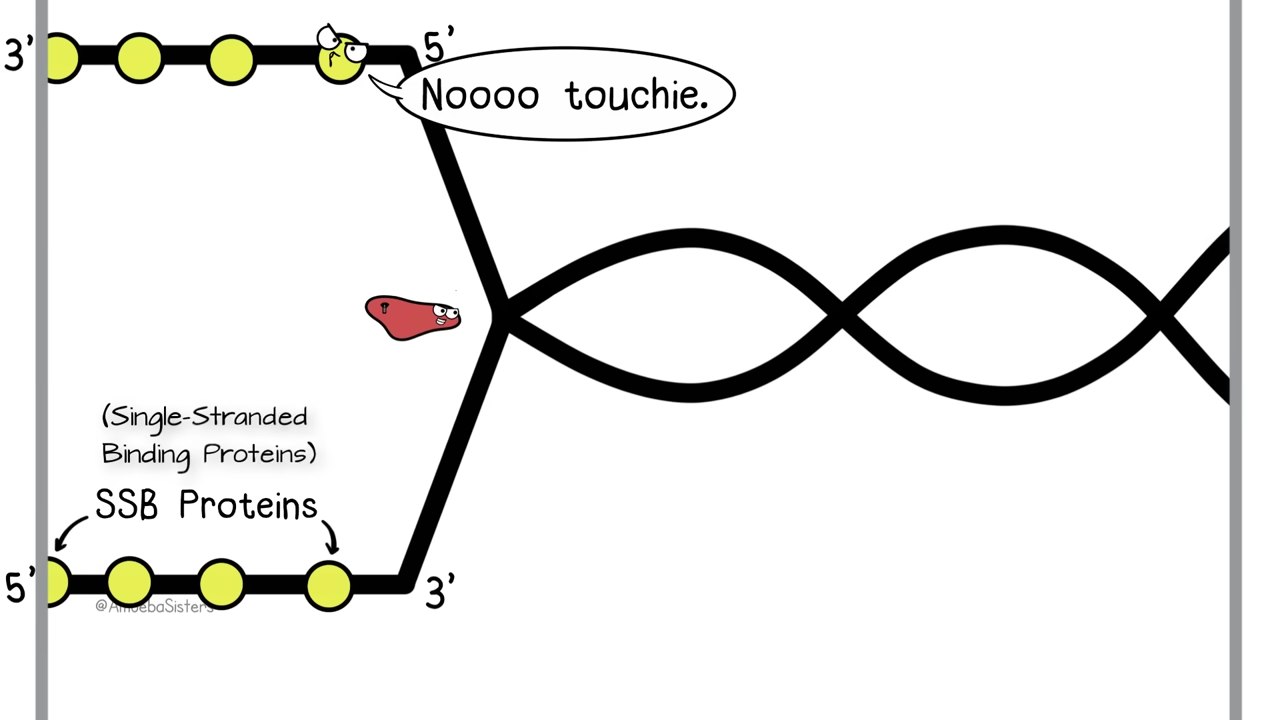
the SSB proteins keep the two strands from sticking back together

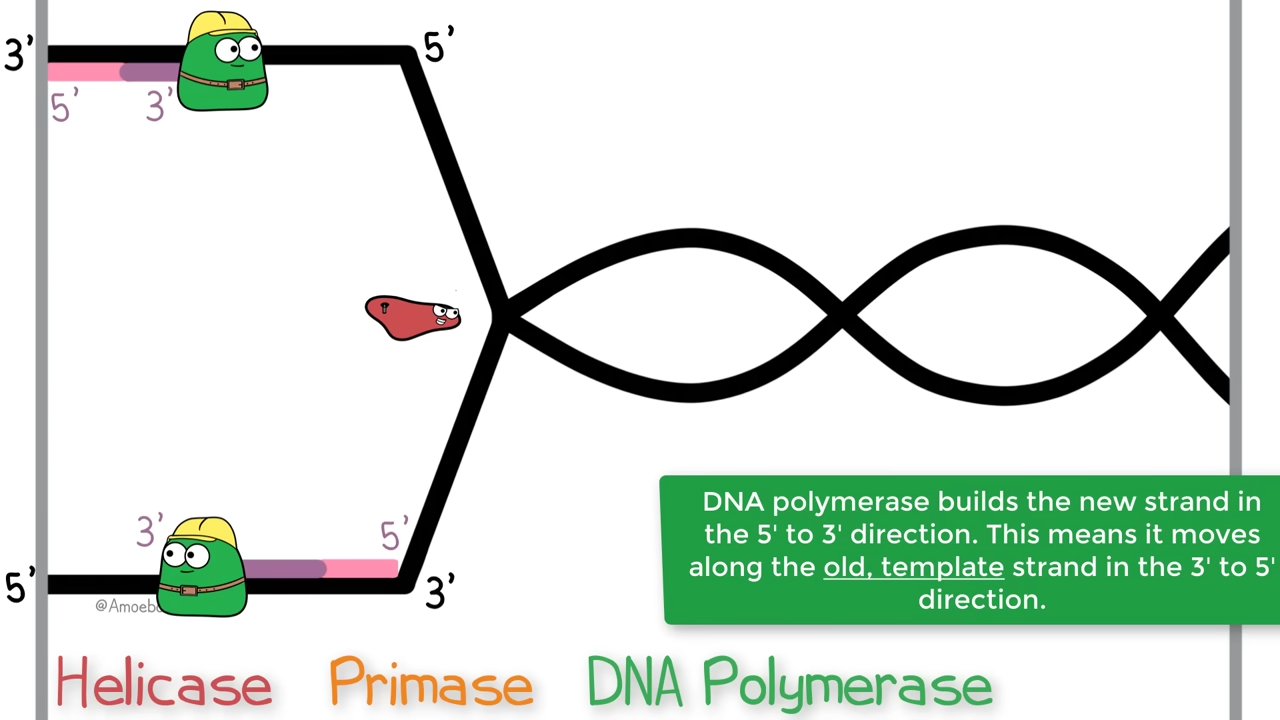
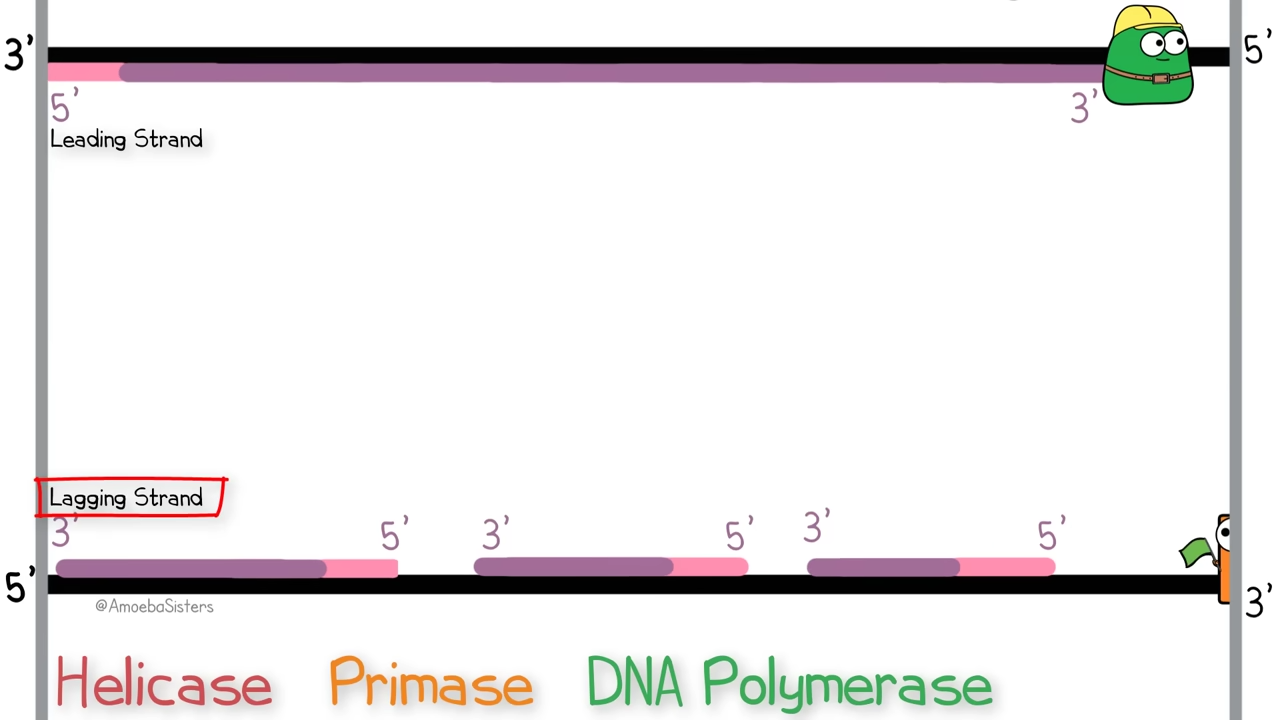
DNA polymerase HAS to go in the 5’ to 3’ direction, so it skips around causing a lagging strand
DNA polymerase has “proof-reading” abilities but sometimes makes mistakes, causing mutation

ligase then comes in and seals in the gaps in the lagging strand
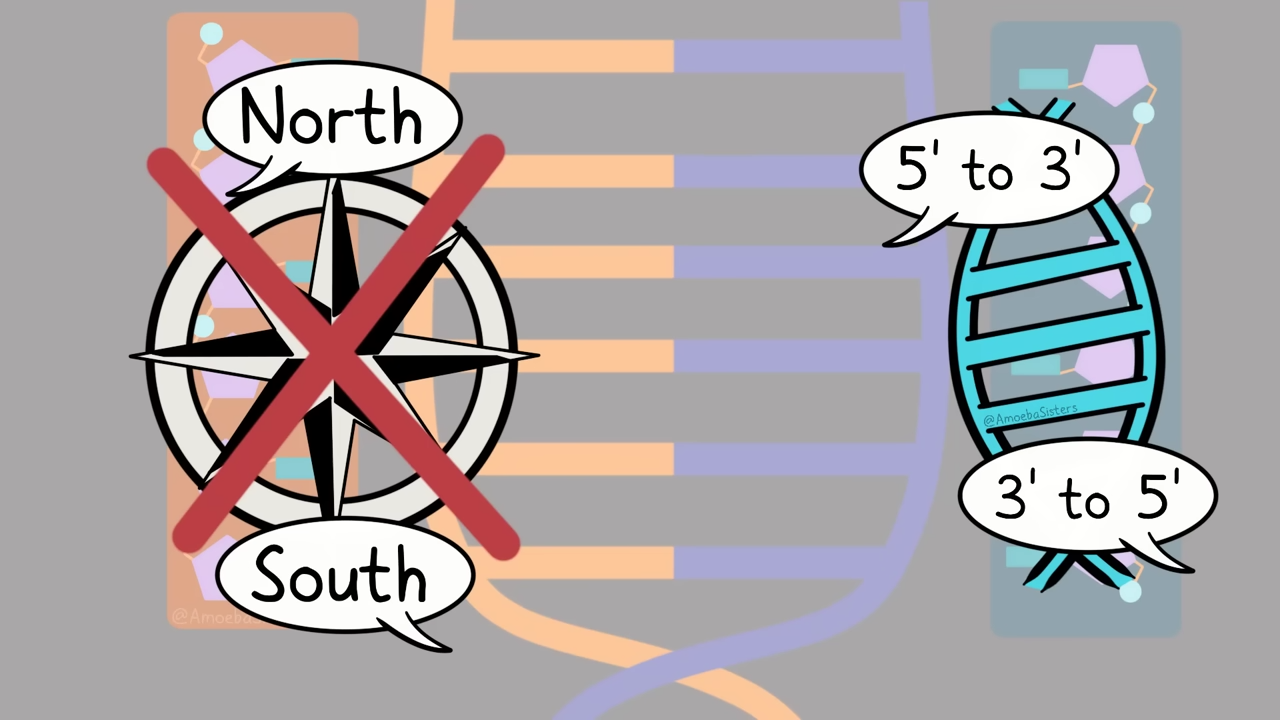
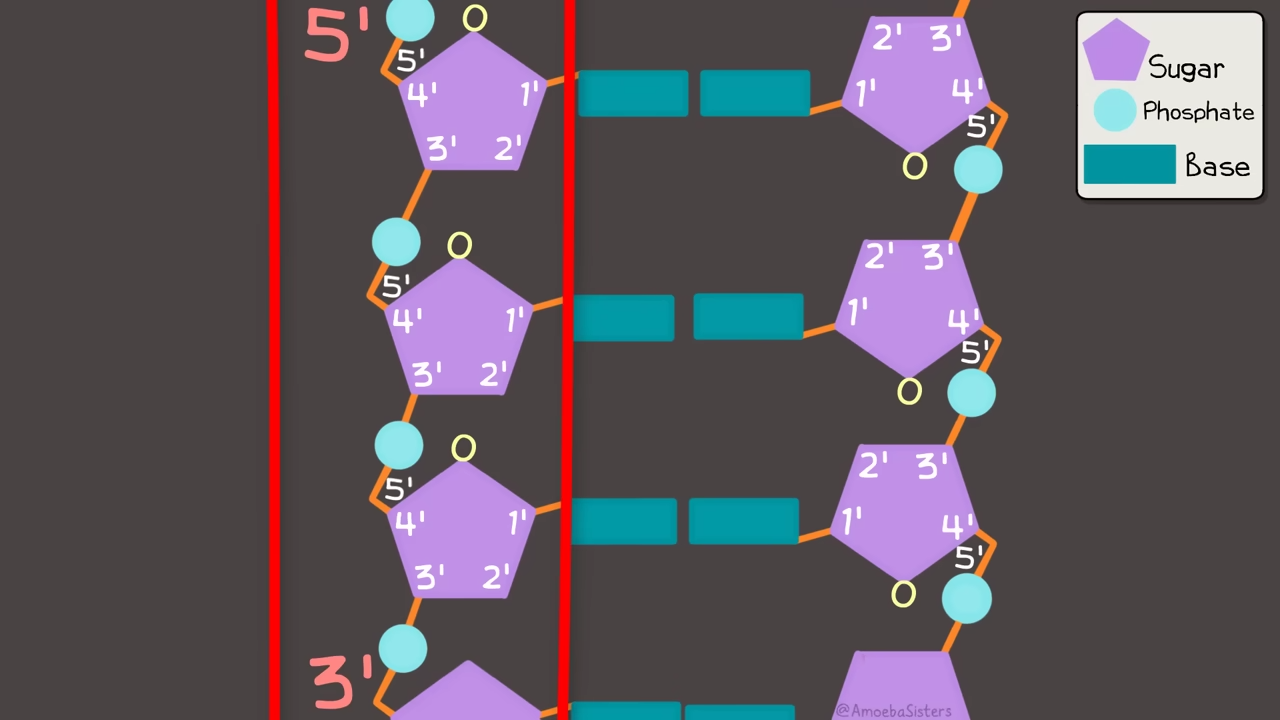
*5 PRIME TO 3 PRIME OR 3 PRIME TO 5 PRIME (5’ to 3’)
the sugar of DNA is part of the BACKBONE of DNA and contains carbons, the number of carbon are numbered right after the oxygen in a clockwise direction;
1’
2’
3’
4’
5’
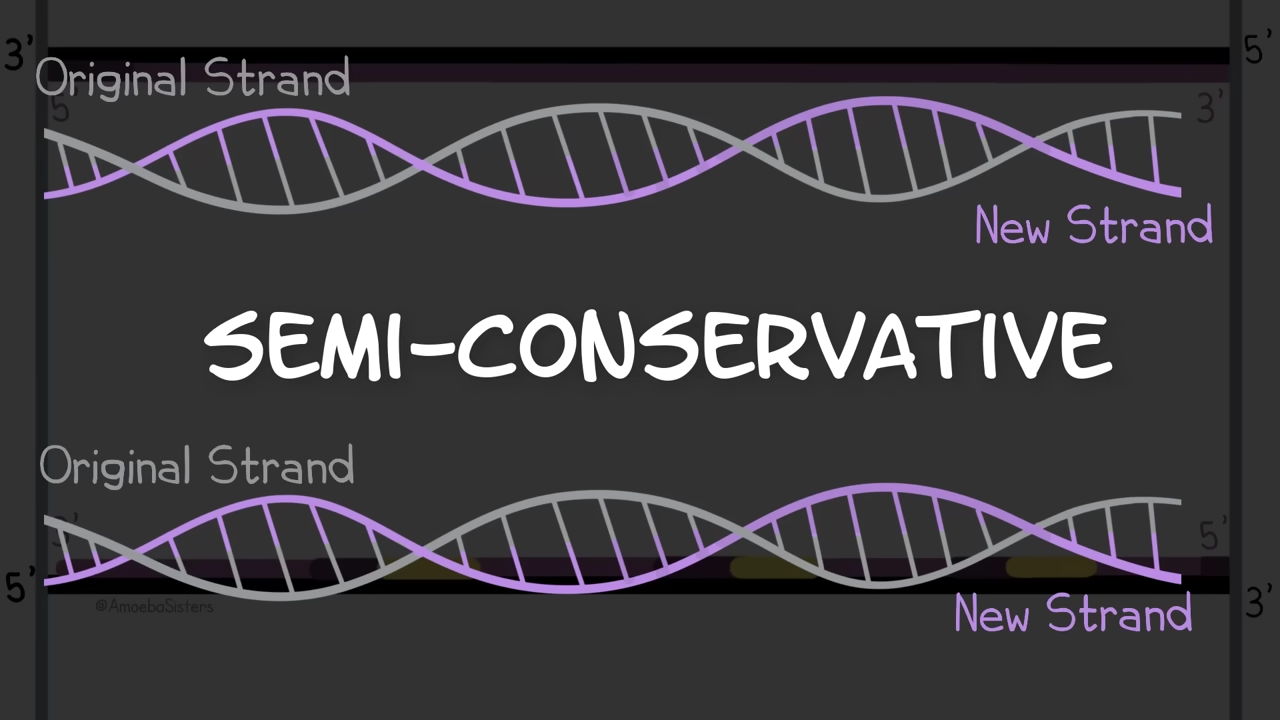
each of the copies now contain ONE of the ORIGINAL and one of the NEW strands
MITOSIS
cell division needed for growth or damage repair to cells
*NOT FOR SPERM OR EGG CELLS
that process is called MEIOSIS
cancer is UCONTROLLED cell growth
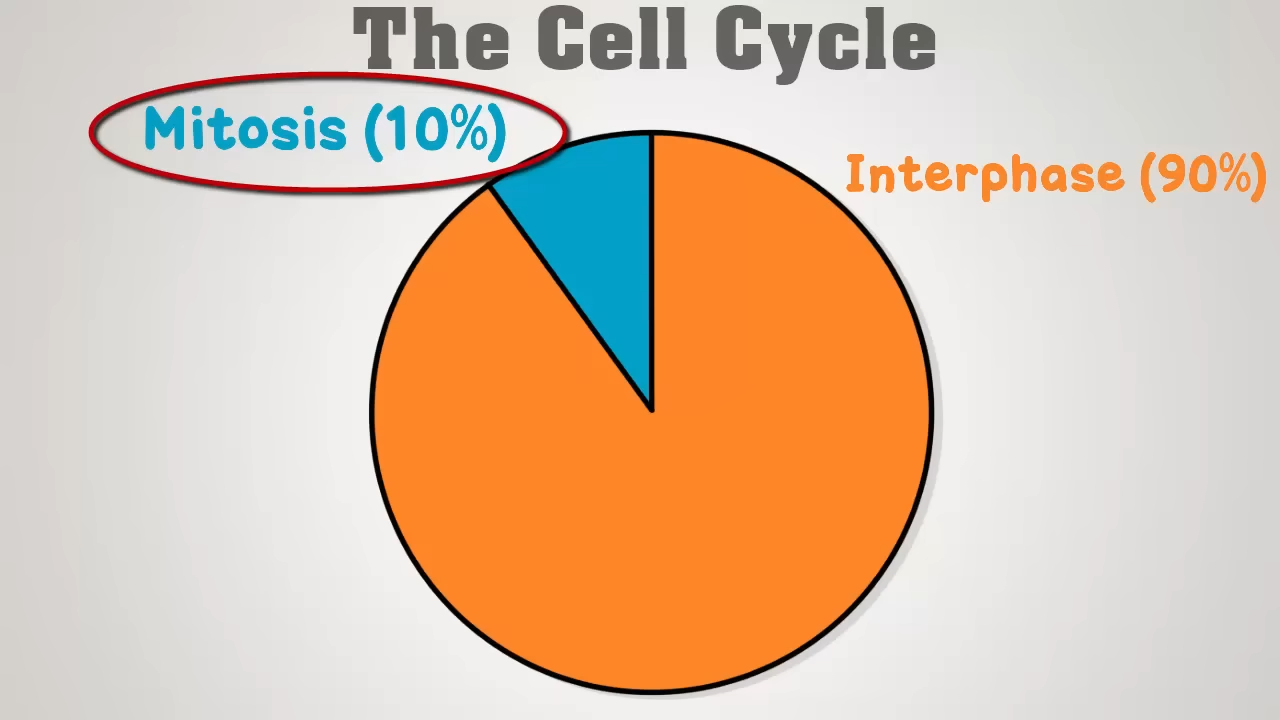
nucleus contains DNA, these DNA strands are organized into chromosomes
you have to duplicate those chromosomes in interphase BEFORE mitosis starts
we count chromosomes by the number of CENTROMERES present


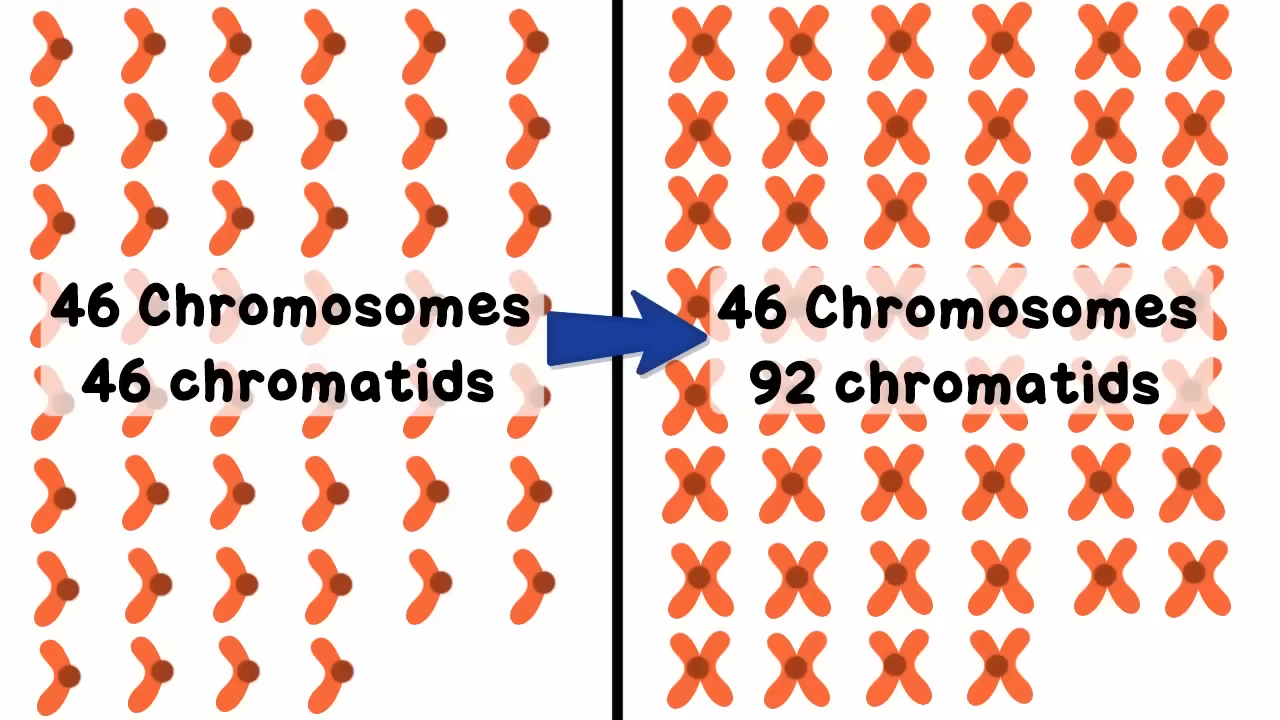
Steps of division PMAT
prophase
metaphase (middle)
anaphase (away)
telophase (two)
then go into cytokinesis: the physical process that splits a cell's cytoplasm into two daughter cells
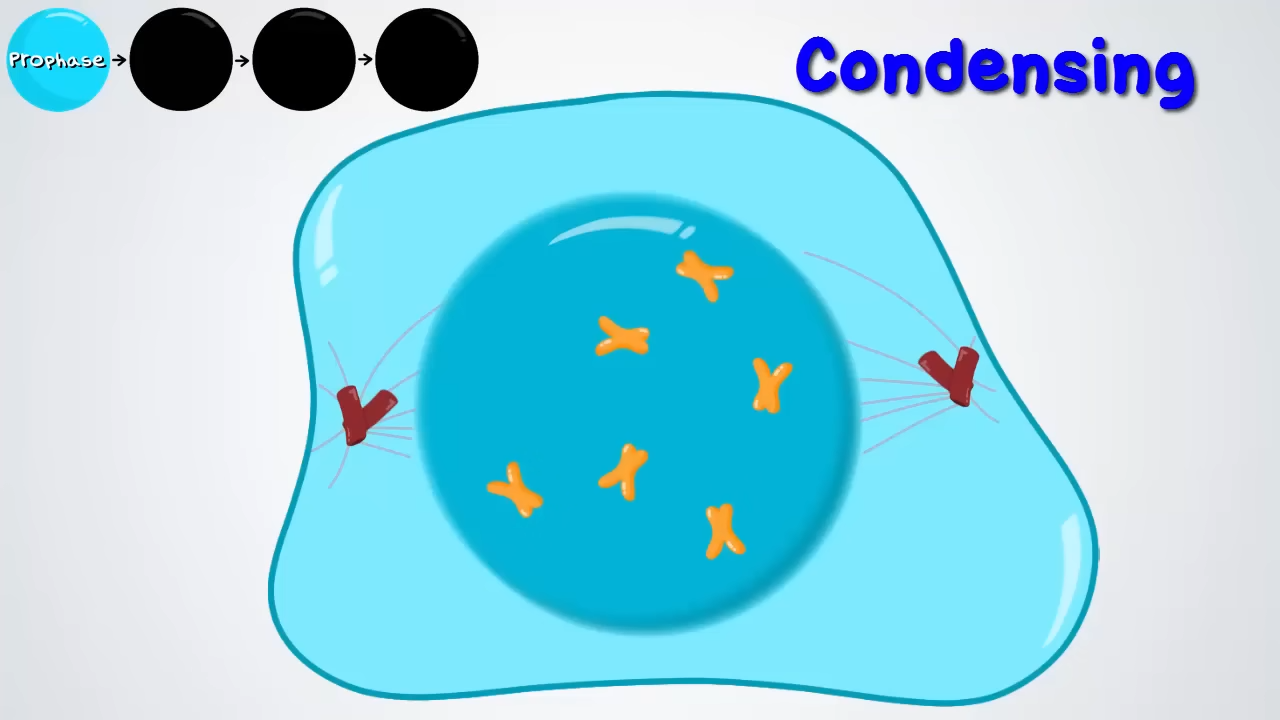
chromosomes are condensing meaning they are thickening an visible

the nucleus is no longer there
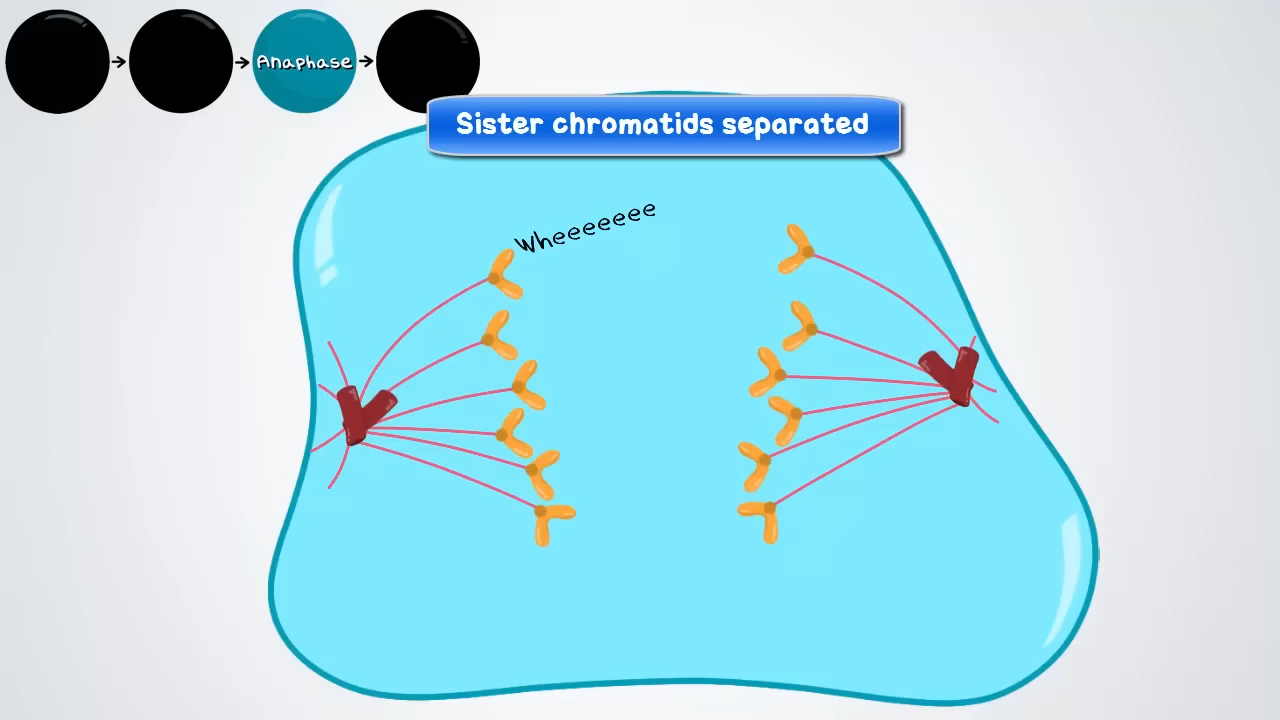

spindles and centrioles are fibers that help separate the chromosomes
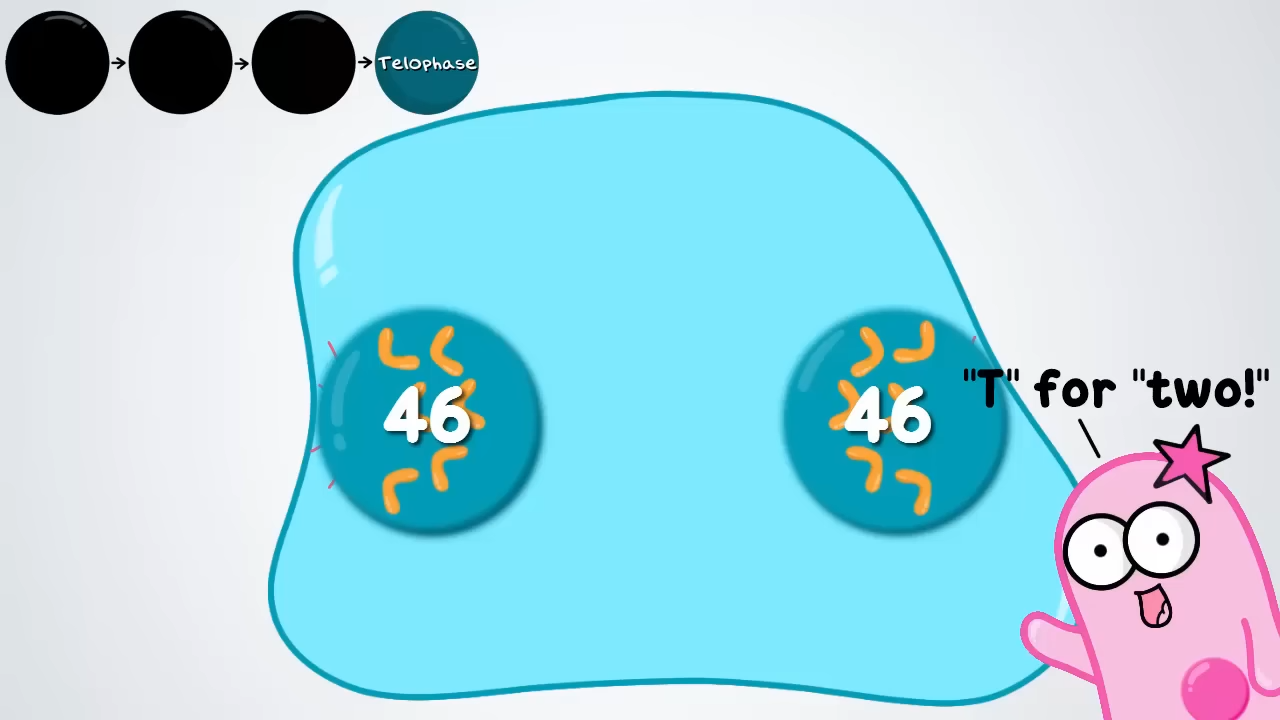
the chromosomes are at the complete opposite ends and new nuclei form to make 2 new identical cells
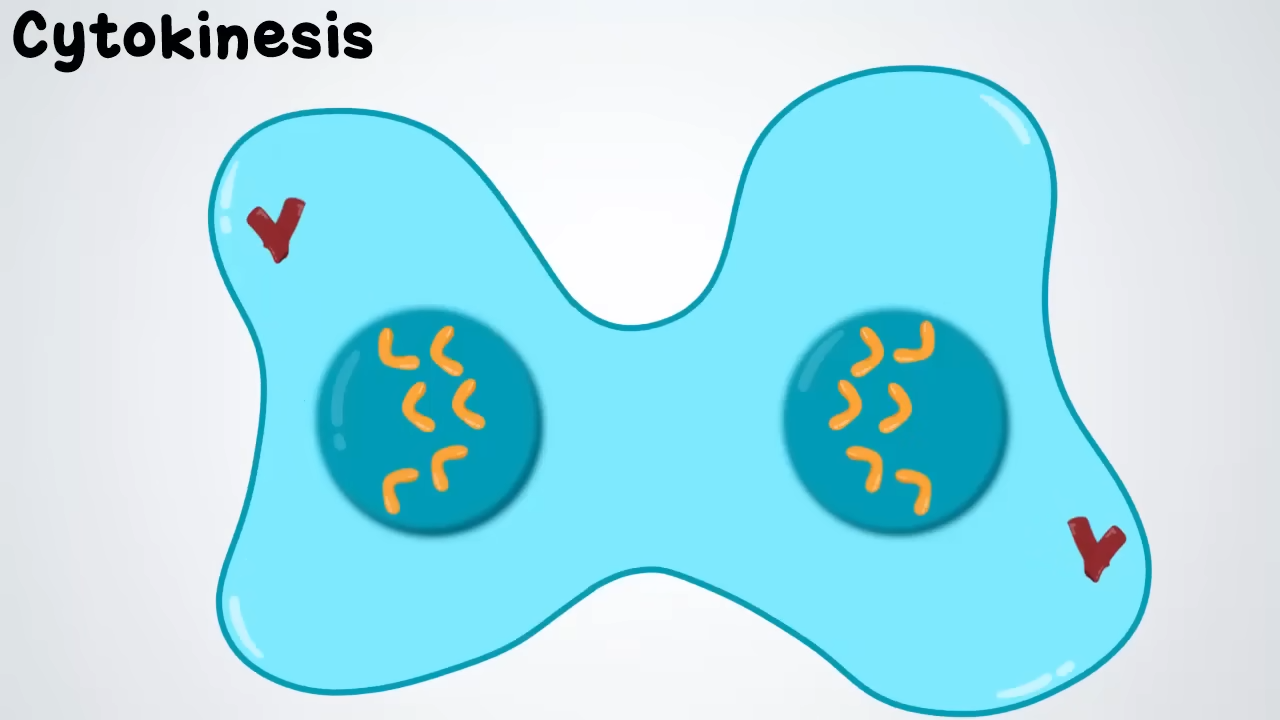
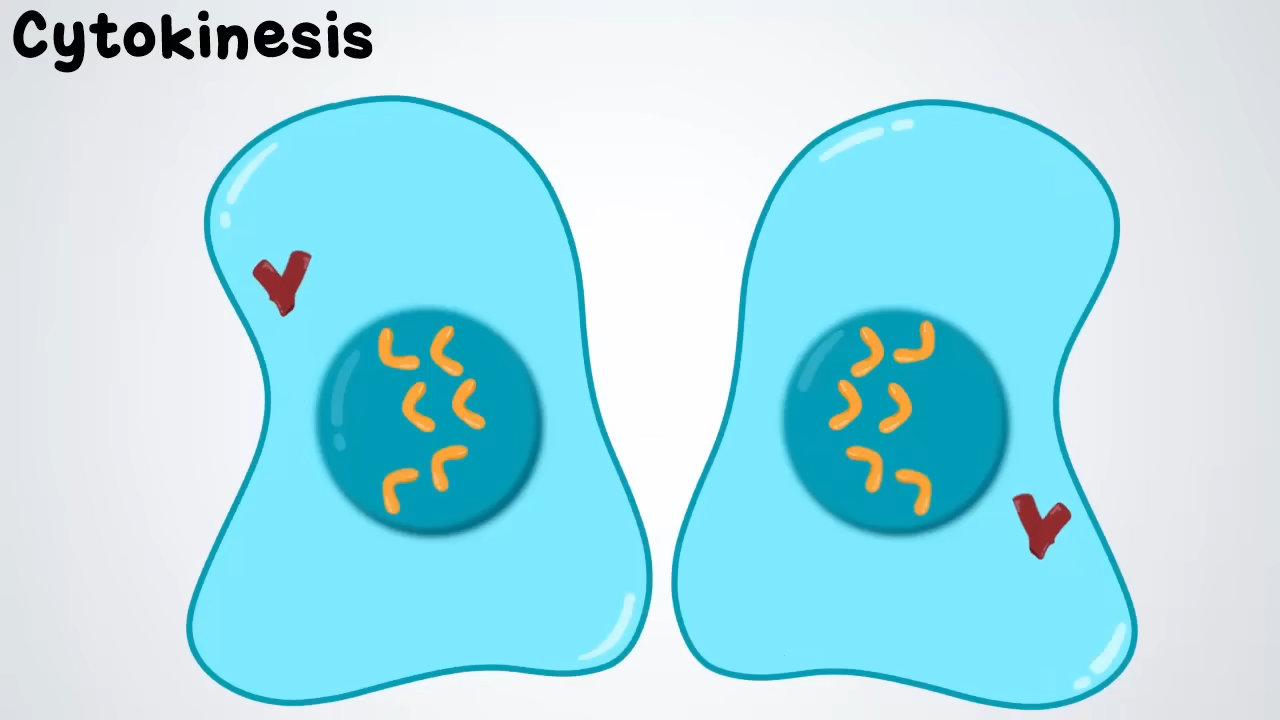
bio topic 5 ch7 : notes
DNA STRUCTURE AND FUNCTION
clones: Genetically identical copy of an organism.
DNA had to be the transforming principle.
DNA was widely assumed to be too simple to encode genetic information, because it has only four nucleotide components
The team were also careful to point out that they had not proven DNA was the only hereditary material.
DNA has to have the following four properties in order to function as the sole hereditary:
Complete genetic information must be transmitted along with the molecule from one generation to the next.
Body cells of any individual of a species should contain the same amount of it.
It must be exempt from major metabolic change—the quantity of the material should not fluctuate over time in cells of a given type.
It must be capable of storing the huge amount of information that would be required to build a new individual.
Identical Twins Have Identical DNA
somatic cell nuclear transfer (SCNT): Reproductive cloning method in which the nucleus of an unfertilized egg is replaced with the DNA of a donor’s body cell.
Few SCNT-generated embryos survive implantation in surrogates.
BUILDING BLOCKS OF DNA
Each nucleotide has three components:
a nitrogen-containing base (nucleotides A,G,T,C
a five-carbon sugar
phosphate groups
The four types of nucleotides differ in their component base:
adenine (A),
guanine (G),
thymine (T),
cytosine (C).
DNA sequence: Order of nucleotides bases in a strand of DNA.
sequences that differ are the basis of traits that distinguish individuals and define species
The DNA molecules in a human cell collectively have about 6 billion base pairs, and would be about 6.5 feet (2 meters) long if stretched out
Proteins associate with DNA molecules to form structures called chromosomes. These proteins pack the DNA very tightly by organizing it into a series of coiled fibers
chromosomes: Structure that consists of DNA together with associated proteins; carries part or all of a cell’s genetic information.
in each eukaryotic chromosome, the DNA molecule’s double helix wraps at regular intervals around proteins called histones, forming spool-like structures that look like beads on a string
histones: Type of protein that associates with the DNA double helix; one of many proteins that structurally organize eukaryotic chromosomes.
A cell preparing to divide will duplicate its DNA.
After duplication, a eukaryotic chromosome consists of two identical DNA molecules attached to one another at a region called the centromere.
centromere: Of a duplicated eukaryotic chromosome, constricted region where sister chromatids attach to each other.
The two identical halves of a duplicated eukaryotic chromosome are called sister chromatids:
sister chromatids: Of a duplicated eukaryotic chromosome, the two identical DNA molecules attached to one another at the centromere.
Just before the cell divides, its DNA packs into an even more highly condensed form that is less likely to become damaged during the division process.
This fiber packs into the chromosome’s most condensed form, which looks like an “X” under a microscope.
chromosome number: The total number of chromosomes in a cell of a given species.
For example, the chromosome number of humans is 46, so our body cells have 46 chromosomes.
Actually, human body cells have two sets of 23 chromosomes: two of each type. Cells with two sets of chromosomes are diploid,
diploid: Having two of each type of chromosome characteristic of the species (2n).
karyotype: Image of an individual’s complement of chromosomes arranged by size, length, shape, and centromere location.
In a human body cell, 22 of the 23 pairs of chromosomes are autosomes.
autosomes: A chromosome of a pair that is the same in males and females; a chromosome that is not a sex chromosome.
sex chromosomes: Chromosome involved in determining anatomical sex; member of a pair of chromosomes that differs between males and females.
The sex chromosomes of humans are called X and Y
typical human female have two X chromosomes (XX)
typical human male have one X and one Y chromosome (XY)
When any cell reproduces, it divides.
Both descendant cells must inherit a complete copy of the parent cell’s genetic information, or they will not be like the parent cell
Each molecule of DNA is copied in its entirety, and two molecules of DNA that are identical to the parent molecule are produced. (DNA replication)
As replication begins, enzymes pry apart the two DNA strands: One untwists the double helix, and another breaks the hydrogen bonds that hold the strands together
DNA polymerase: Enzyme that carries out DNA synthesis during DNA replication; uses a DNA template to assemble a complementary strand of DNA.
As the DNA strands separate, their internally positioned bases become exposed, and another enzyme starts making primers.
primer: Short, single strand of DNA or RNA that serves as an attachment point for DNA polymerase.
Gene expression : the process by which the information encoded in a gene is used to direct the assembly of a protein molecule.
DNA Strands Separate
Primers Hybridize
DNA Polymerase Assembles Nucleotides
Two DNA Molecules Are Produced
mutation: Permanent change in the DNA sequence of a chromosome. See base-pair substitution, deletion, insertion.
Mutations that alter DNA’s instructions may have harmful or lethal outcomes
ex> cancer
Mutations can be introduced into DNA in several ways.
Some are the outcome of errors during DNA replication, but most are a consequence of DNA damage (breaks in the sugar–phosphate backbone) or alterations in the structure of nucleotide bases.
Mutations occur when the cell’s repair mechanisms fail to fix the damage.
Sometimes, a newly replicated DNA strand is not exactly complementary to its parent strand.
A nucleotide may get deleted during DNA replication, for example, or an extra one inserted.
Occasionally, the wrong nucleotide is added.
Most polymerases can proofread their work, reversing the synthesis reaction to remove an error, then resuming synthesis in the forward direction.
Errors missed during this proofreading process can be corrected later, because bases that are not properly paired distort the double helix.
The nonparental (new) strand is cut, and the section containing the mismatch is removed.
A DNA polymerase then uses the parental strand as a template to replace the missing nucleotides,
DNA ligase seals any gaps in the new strand.
Sometimes, proofreading and mismatch repair fail to correct an error.
The error cannot be detected after a second round of DNA replication, because both strands will then base-pair properly
When the cell divides, its descendants will inherit the error as a mutation.

Dimers cause mutations because polymerases tend to copy kinked DNA incorrectly.
Dimers can also block the progress of a polymerase, so DNA replication stalls or collapses.
This outcome often causes the chromosome to break up.
Usually, chromosomal breaks cause cell death, but cells that do survive often have mutations at the sites of breakage.
It requires the use of a sister chromatid (or another chromosome) as a template for DNA synthesis.
Skin Cancer
For every second a skin cell spends in the sun, 50 to 100 dimers form in its DNA.
This is why exposing unprotected skin to sunlight or other sources of UV light can cause skin cancer.
DNA sequences are often written as single sequences in the 5' to 3' direction. This does not mean that the molecule is not double-stranded, but rather the second strand is assumed. For instance, if you see a DNA sequence listed as: ATGGGGCCG, without other information provided, assume that the sequence is written from 5' to 3', left to right. Also assume that the complementary sequence from 3' to 5' exists, hydrogen bonded to the initial sequence.
Many mutations are caused by chemicals that bind to nucleotide bases
DNA polymerases tend to skip bases that have been altered in this way, or copy them incorrectly during replication.
An altered base may also cause chromosome breakage by blocking DNA replication.
Tobacco smoke in particular contains thousands of chemicals, at least 70 of which have been proven to cause mutations that can lead to cancer.
Smoking causes about 30 percent of all cancer deaths in the United States,
using other tobacco products such as smokeless tobacco, snuff, and chewing tobacco is also dangerous.
These products contain the same mutation-causing chemicals as tobacco smoke.
Simply painting some of these chemicals on the skin of animals causes tumors to form.
Some foods contain mutation-causing chemicals.
Nitrites, for example, are added to cured foods such as sausages and bacon, and they form when meat is smoked or cooked at high temperature.
Acetaldehyde (the chemical that is produced by the body during alcohol consumption) has several mutation-causing effects:
It binds to bases directly, cross-links the two strands, and causes covalent bonds to form between nucleotide bases and other organic molecules in the cell.
each human child is born with an average of 64 new mutations.
It is important to remember that not all mutations are dangerous—some are even beneficial.
Summary
Section 7.1
The now-common practice of making clones (exact genetic copies) of adult animals works because the DNA in each body cell contains instructions for building the organism.
Section 7.2
Identifying deoxyribonucleic acid (DNA) as the hereditary material of life took decades of research involving many scientists. Experiments with bacteria were key to the discovery.
Somatic cell nuclear transfer (SCNT) and other types of reproductive cloning technologies can produce genetically identical individuals (clones) from a body cell of an adult animal.
Cells in multicelled bodies differ because they use different subsets of their DNA. Differentiation is the process by which cells become specialized during embryonic development.
Section 7.3
A nucleotide has three components: a five-carbon sugar, a nitrogen-containing base, and phosphate groups. Bonds between the sugar of one nucleotide and a phosphate group of the next form the sugar–phosphate backbone of nucleic acid chains (strands). DNA strands are assembled from four types of nucleotides. Each has a deoxyribose sugar, a chain of three phosphate groups, and one of four bases: adenine (A), guanine (G), cytosine (C), or thymine (T).
A molecule of DNA consists of two nucleotide strands coiled into a double helix, with the sugar–phosphate backbones running in parallel but opposite directions. Hydrogen bonds between internally positioned bases of the nucleotides hold the two strands together. The bases pair in a consistent way: A with T, and G with C. The order of bases along a strand of DNA—the DNA sequence—varies among species, and this variation is the basis of life’s diversity.
Section 7.4
Proteins such as histones associate with a eukaryotic DNA molecule to form a chromosome. These proteins twist and pack the DNA very tightly into the nucleus.
The DNA of a eukaryotic cell is divided among a number of chromosomes that differ in length and centromere location. When duplicated, a eukaryotic chromosome has an X shape and consists of two sister chromatids attached at the centromere. Each sister chromatid has one DNA molecule.
Diploid (2n) cells have two sets of chromosomes (two of each type of chromosome). Chromosome number is the total number of chromosomes in a cell, and it is a characteristic of the species. For example, in humans, a normal body cell has 23 pairs of chromosomes, so the chromosome number of humans is 46. An image showing all of the chromosomes in a cell is called a karyotype.
Members of a pair of sex chromosomes differ among males and females. Chromosomes of pairs that are the same in males and females are autosomes.
Section 7.5
Before a cell divides, it copies all of its DNA (by DNA replication) so both of its cellular offspring inherit a complete set of chromosomes. For each molecule of DNA that is copied, two DNA molecules are produced; each is a duplicate of the parent. One strand of each molecule is new, and the other is parental.
During DNA replication, enzymes unwind and separate the two strands of the double helix, and assemble primers that base-pair (hybridize) with the single DNA strands. Starting at the primers, DNA polymerase enzymes use the sequence of bases on each strand as a template to assemble new, complementary strands of DNA from free nucleotides. DNA ligase seals any gaps.
Section 7.6
DNA replication is not a perfect process, so errors such as incorrect, missing, or extra nucleotides are inevitable. Proofreading by DNA polymerases corrects most replication errors as they occur. Uncorrected errors become mutations, which are permanent changes in the DNA sequence of a chromosome. Mutations can be passed to descendant cells. Those that alter information encoded in DNA can affect cell functioning.
Environmental agents such as UV light, ionizing radiation, and some chemicals that bind to nucleotides damage DNA. Cells have repair mechanisms that can fix most DNA damage. Unrepaired damage causes replication errors and other events that result in mutations.
Some mutations are dangerous. Cancer and genetic disorders begin with mutations, but not all mutations are harmful.
DNA replication occurs in the nucleus
it replicated before it divides so the daughter cell can have a copy of that DNA
key players:
DNA polymerase
helicase
primase
ligase
helicase→ the unzipping enzyme
it “unzips” the two strands of DNA, breaking the hydrogen bonds they hold the bases together
primase→ the initializer
makes the primer to figure out where to start the work of replication
primer is actually made with RNA
DNA polymerase→ the builder
replicates DNA molecules to actually replicate the DNA
ligase→ the gluer
helps glue DNA fragments together

the SSB proteins keep the two strands from sticking back together



DNA polymerase HAS to go in the 5’ to 3’ direction, so it skips around causing a lagging strand
DNA polymerase has “proof-reading” abilities but sometimes makes mistakes, causing mutation

ligase then comes in and seals in the gaps in the lagging strand


*5 PRIME TO 3 PRIME OR 3 PRIME TO 5 PRIME (5’ to 3’)
the sugar of DNA is part of the BACKBONE of DNA and contains carbons, the number of carbon are numbered right after the oxygen in a clockwise direction;
1’
2’
3’
4’
5’

each of the copies now contain ONE of the ORIGINAL and one of the NEW strands
MITOSIS
cell division needed for growth or damage repair to cells
*NOT FOR SPERM OR EGG CELLS
that process is called MEIOSIS
cancer is UCONTROLLED cell growth

nucleus contains DNA, these DNA strands are organized into chromosomes
you have to duplicate those chromosomes in interphase BEFORE mitosis starts
we count chromosomes by the number of CENTROMERES present



Steps of division PMAT
prophase
metaphase (middle)
anaphase (away)
telophase (two)
then go into cytokinesis: the physical process that splits a cell's cytoplasm into two daughter cells

chromosomes are condensing meaning they are thickening an visible

the nucleus is no longer there


spindles and centrioles are fibers that help separate the chromosomes

the chromosomes are at the complete opposite ends and new nuclei form to make 2 new identical cells


 Knowt
Knowt